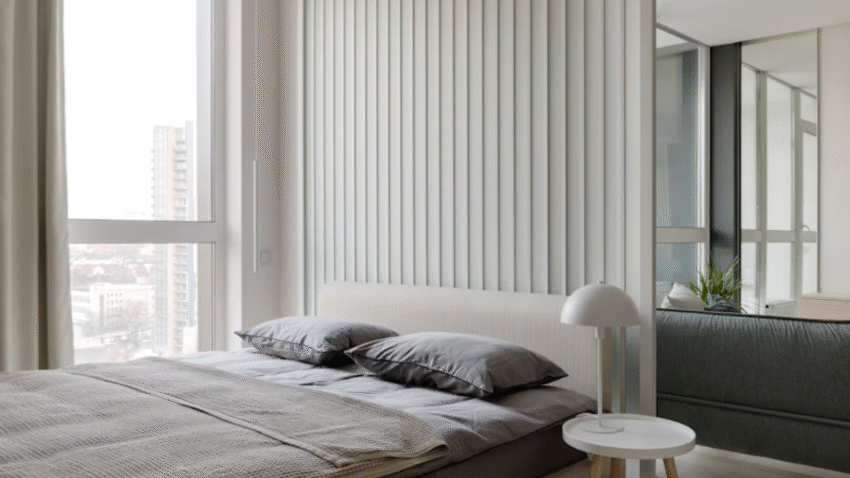Introduction
Struggling with sneezing, stuffy noses, or itchy eyes at night? You’re not alone. Learning how to get rid of bedroom allergens can transform your sleep quality and overall health. Bedrooms are a hotspot for dust mites, pet dander, mold, and other irritants that can trigger allergies and make restful sleep feel impossible. This step-by-step guide will help you create an allergy-friendly sanctuary so you can breathe easier every night.
Why Reducing Bedroom Allergens Matters
Your bedroom should be the cleanest, most restful space in your home. But it’s often where allergens accumulate the most—especially in mattresses, bedding, carpets, and curtains. Exposure to these allergens can worsen asthma, disturb your sleep cycle, and even lead to chronic health problems. Reducing allergens in your bedroom can improve air quality, ease allergy symptoms, and help you wake up feeling refreshed and energized.
Step-by-Step Guide to Getting Rid of Bedroom Allergens
1. Wash Bedding Weekly
Your sheets and pillowcases collect skin cells, sweat, and dust mites.
- Wash all bedding in hot water (at least 130°F or 54°C) once a week to kill dust mites.
- Use fragrance-free detergents if you have sensitive skin or allergies.
- Don’t forget to wash pillow covers, mattress protectors, and blankets regularly too.
2. Use Allergen-Proof Covers
Invest in protective covers to create a barrier against dust mites.
- Use zippered, allergen-proof covers for mattresses, pillows, and box springs.
- Make sure the covers are tightly woven and washable.
- Replace covers every few years to maintain effectiveness.
3. Declutter to Reduce Dust
Clutter attracts dust and makes cleaning harder.
- Keep surfaces like nightstands, dressers, and under the bed clear of unnecessary items.
- Store books, clothes, and trinkets in closed bins or drawers.
- Consider minimalist décor to make dusting quick and easy.
4. Vacuum and Dust Regularly
Routine cleaning keeps allergens under control.
- Use a vacuum with a HEPA filter to trap tiny particles instead of releasing them back into the air.
- Vacuum carpets, rugs, and upholstery at least once a week.
- Dust furniture, blinds, and baseboards with a damp cloth to avoid stirring up allergens.
5. Replace Carpets with Hard Flooring (If Possible)
Carpets can hold dust, pet dander, and mold.
- If you can, switch to hard floors like wood, tile, or vinyl.
- Use washable area rugs that you can clean regularly.
- If removing carpet isn’t an option, vacuum with a HEPA filter often.
6. Keep Pets Out of the Bedroom
Pet dander is a major allergen source.
- Make your bedroom a no-pet zone if possible.
- Wash pet bedding and toys regularly if they’re near your bedroom.
- Use lint rollers to remove hair from clothes or bedding if your pet sneaks in.
7. Control Humidity
Mold and dust mites thrive in damp environments.
- Keep your bedroom’s humidity below 50%.
- Use a dehumidifier if you live in a humid climate.
- Run an exhaust fan or open windows occasionally for ventilation (if outdoor air quality allows).
8. Clean or Replace Air Filters
Clean air helps cut down allergens.
- Replace HVAC filters every 2–3 months, or more often if you have pets or allergies.
- Consider using a portable HEPA air purifier in your bedroom to trap allergens.
9. Wash or Replace Curtains and Blinds
Window treatments attract dust and mold.
- Choose washable curtains or blinds you can wipe down easily.
- Wash fabric curtains regularly or swap them for blinds that you can dust weekly.
10. Keep Plants in Check
While some plants purify air, they can also harbor mold.
- Keep only a few low-maintenance plants in the bedroom.
- Avoid overwatering and check for mold in soil.
- Wipe plant leaves to remove dust.
Common Mistakes to Avoid
Mistake 1: Skipping Regular Bedding Washes
Solution: Stick to a weekly washing routine for all bedding—this makes the biggest difference for dust mites.
Mistake 2: Ignoring Hidden Dust Traps
Solution: Clean under the bed, behind furniture, and on top of wardrobes or shelves to get rid of hidden allergens.
Mistake 3: Using the Wrong Vacuum
Solution: Always use a vacuum with a HEPA filter to trap microscopic allergens instead of blowing them around.
Mistake 4: Leaving Windows Open at the Wrong Time
Solution: If you have seasonal allergies, keep windows closed during high pollen times to prevent allergens from entering.
Mistake 5: Letting Humidity Get Too High
Solution: Use a hygrometer to monitor bedroom humidity and run a dehumidifier if needed.
Extra Tips & Bedroom Hacks
- Try Hypoallergenic Bedding: Look for bedding labeled hypoallergenic—it’s designed to resist dust mites and allergens.
- Use a Humidifier Carefully: In dry climates, a small humidifier can help with breathing, but always keep it clean to avoid mold growth.
- Related Guide: Want to make your bedroom even more comfortable? Check out our article on how to wash and care for bed sheets to keep your bed fresh and allergen-free.
Conclusion
Knowing how to get rid of bedroom allergens can completely transform your sleep and health. By washing bedding weekly, decluttering, vacuuming with a HEPA filter, and controlling humidity, you can cut down on irritants that trigger allergies and disturb sleep.
Remember: the cleaner and simpler your bedroom, the easier it is to breathe easy and wake up refreshed. Bookmark this guide to keep your bedroom a peaceful, healthy space year-round!
